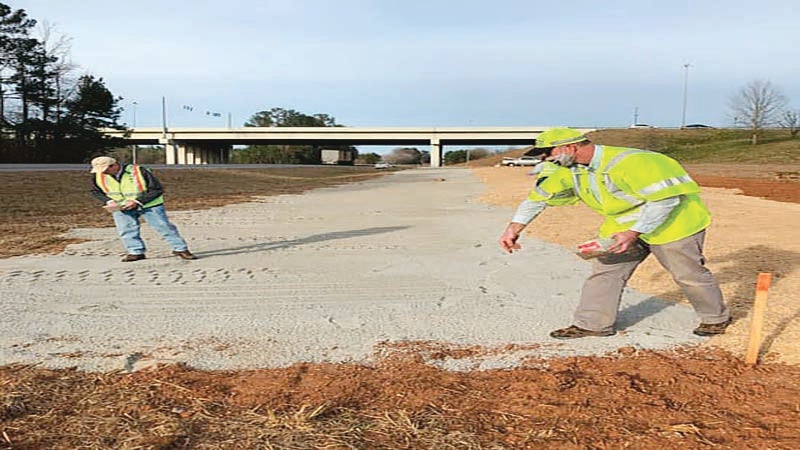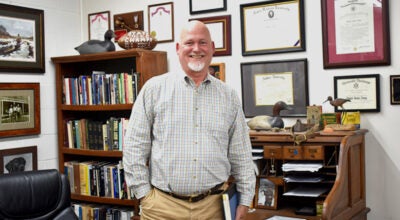The Ray, GDOT, UGA announce second phase of research plantings on I-85
Published 10:43 am Friday, February 12, 2021

- New meadow-research plantings on The Ray consist of nine plots totaling 15,000 square feet (0.34 acres), which include three unique seed mixes sown in with three different installation methods: finely crushed sand-like granite, sawdust and the Georgia clay soil.
|
Getting your Trinity Audio player ready...
|
Georgia Department of Transportation (Georgia DOT), The Ray and the University of Georgia’s College of Environment + Design (UGA CED) have announced Phase 2 of their meadow-research plantings on The Ray Highway, at the Exit 6 median alongside I-85’s northbound lanes.
According to a press release from the three entities, the purpose of the research is to establish innovative uses that beautify and improve the utilization of Georgia’s highway corridor. The Ray is the 18-mile stretch of In-85 named in memory of Ray C. Anderson that starts at the Alabama-Georgia line.
The latest phase of the project, led by The Ray’s landscape design and research fellow, Matthew Quirey, is an expansion of ongoing research at the Landscape Lab, which broke ground on its first phase of plantings in January 2020. The visioning, research design and multi-year strategy for the Landscape Lab at Exit 6 began in 2016 through a partnership between Georgia DOT, The Ray and UGA CED’s Associate Professor Brad Davis.
The new research site consists of nine plots totaling 15,000 square feet (0.34 acres), which include three unique seed mixes sown in with three different installation methods: finely crushed sand-like granite, sawdust and the Georgia clay soil.
The seeding materials act as a weed-barrier allowing the meadow seeds to grow without competition from the grasses and weeds commonly found in the highway right-of-way (ROW).
Planting the seed mixes in the bare clay soil is used as a control to compare the success of the other installation methods. Over the next three years, the nine plots will be monitored closely by Davis and CED graduate students.
According to the press release, Cherokee Materials also supported the effort by offering a courtesy demonstration of their Terraseeding® process, which allows for a faster installation of the meadow seeds compared to the traditional method.
Not only does it combine the delivery, distribution and application of the seed material, Terraseeding® does not require heavy equipment to access the site and compact the soil. Instead, the materials are transported and spread through a long hose with a two-person crew for a substantially more efficient installation.
“This is one of many projects that Georgia DOT has worked on with The Ray to evaluate and implement strategies that preserve natural resources and protect Georgia’s environment,” said Georgia DOT Commissioner Russell R. McMurry, P.E. “GDOT is proud of its association and partnership with The Ray to create regenerative highway ecosystem technologies that enhance mobility for Georgia.”
“The Ray’s Landscape Lab serves as a proving ground for the beautification and utilization possible on our interstate roadsides,” said Harriet Anderson Langford, president and founder of The Ray. “The regenerative roadsides that wildflower meadows produce not only make highways more attractive for travelers.
They act as natural pollinators for our bee and butterfly populations, reduce the roadside maintenance burden for state DOTs, and the blanket installation methods suppress weeds and allow root structures to stabilize the soil.”
Pollinator meadows reduce maintenance and require less mowing than traditional turf grass, minimizing costs to the state and risks to roadside maintenance workers. The plants’ extensive root structure holds the soil to prevent erosion and sedimentation, and restores soil nutrients over time.
The roadside meadows also attract pollinating insects, which are vitally important for ecosystem services, the food supply and the long-term success of Georgia farms. “With the Landscape Lab’s meadows, our team, along with our partners at GDOT, UGA, Heritage Construction, Cherokee Materials and Advanced Handling Systems, are working to find financially feasible options for plantings on our interstate roadsides from the inception,” Quirey said.
“This research will lead to a more efficient use of resources, provide environmental benefits, and have the scalability to be used broadly across Georgia and with other state DOTs. These plantings are not gardens needing more maintenance. By establishing a community of native grasses and flowering plants, these meadows show a reduction of annual costs for DOTs while at the same time providing a host of important benefits.”
“The partnership is an exciting model as we seek to achieve the same goals of a more sustainable, environmentally supportive and beautiful roadside for Georgians and visitors passing through,” Davis said. “The work is not easy — changing the way we manage the roadside requires turning much of what we have done for over a century on its head and starting with a new approach.
My hope is one day we can travel down the highway and see acres of native wildflowers, knowing that those species are working to support healthier lives and leave a better world for those that come after us.”
The vegetation lab at Exit 6 began three years ago when it was approved by the Roadside Enhancement and Beautification Council and is financially supported by Georgia DOT and The Ray. Phase one of the project was completed in January 2020 with three wildflower test sites.
In addition to maintaining the site and monitoring the results, future plans include pilot projects to improve slope stabilization, reduce erosion and sedimentation into the watershed, and improve stormwater management. The project will continue for the next three to five years. Exit 6 on The Ray Highway is also home to Kia Motors Manufacturing Georgia (KMMG), Kia’s only North American production facility.




